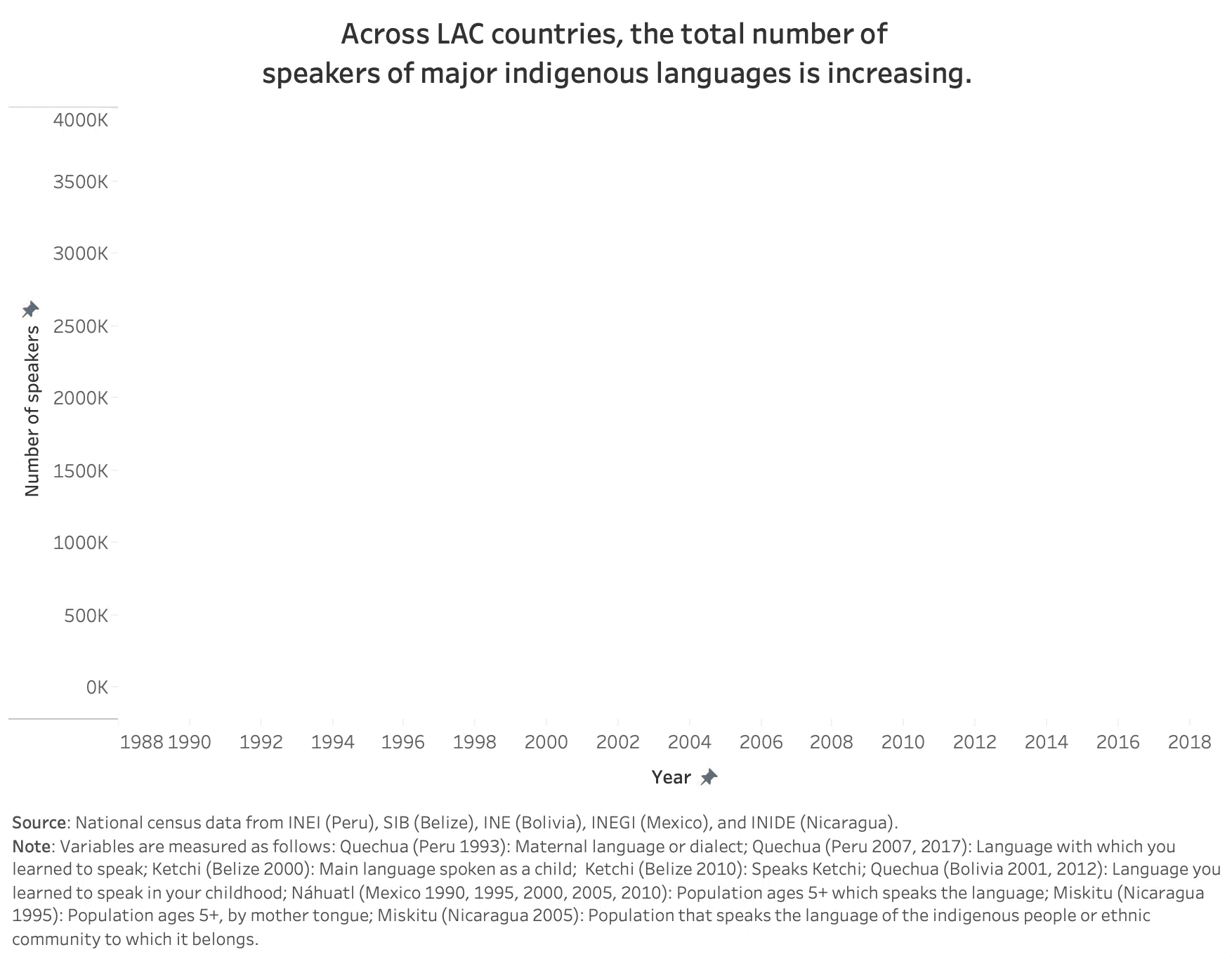The wisdom in our words: Protecting indigenous languages in Latin America and the Caribbean
September 4, 2019

Last month we celebrated the International Day of the World's Indigenous Peoples. In honor of this day that celebrates indigenous peoples and cultures, let us remind ourselves of the humanist approach to identity. We must emphasize the protection of the right to choose one’s identity (and thus the availability of identity-related functionings), as well as the fact that identity is multiple and there is always a dimension of it that connects us to others. Some of the worst social and political crises in history have emerged from attempts to reduce identity to only one dimension: strategies to alienate people from others by collapsing identity to one dimension that makes them different to others, rather than finding all the many dimensions that bring them close to each other. On the other hand, protecting cultural freedom necessarily involves the defense of identity-related functionings. In the same way in which reducing identity to one dimension goes against a humanistic approach, it would be a serious mistake not to protect specific aspects of it as essential elements in the feasibility set of people with regards to their identity choices. Strengthening each and every dimension of our identities is a way to always maintain open the channels to be, all of us, part of the same collective ideal.
2019 is the International Year of Indigenous Languages. At the global level,statistics suggest that the majority of the world’s estimated 7,000 languages are indigenous. They also suggest that the majority of these are seriously endangered or under threat of extinction. But what does this situation look like in Latin America and the Caribbean and what are governments doing to protect this important part of our region’s cultural heritage?
According to a recent World Bank report, approximately 560 indigenous languages are spoken in Latin America. While these are spoken in almost every country, the majority of them are concentrated in a few countries—including Brazil (with 186 different languages), Mexico (67), Colombia (65), and Peru (47).There is little systematic data on the number of speakers of these 560 different languages—and much less data on how the number of speakers has changed over time—but, it is estimated that in recent decades about one-fifth of indigenous peoples lost their native languages in the region.
However, when looking at some of the most commonly spoken indigenous languages in LAC, the trend looks surprisingly different. Using national census data, this #GraphForThought looks at how the total number of speakers of the most commonly spoken indigenous language in selected LAC countries has changedover the most recent periods of data collection. For countries with available data, a consistent and positive trend emerges—the total number of speakers of the most commonly spoken indigenous language in each country has actually increased. For example, in Peru the total number of Quechua speakers increased from 3.2 million to 3.8 million people from 1993 to 2017.
While in some countries, the increase in total number of speakers does not correspond to an increase in the total share of speakers (as the country’s total population has also grown), in other countries it does. For example, the increase in the total number of Quechua speakers in Peru from 2007 to 2017 corresponds to an increasedshare of total Quechuaspeakersfrom 13%to 13.6% of the population ages 5+. It is important to remember, however, that these trends are likely not capturing what is happening with the most endangered languages in these countries (which are precisely defined by having a limited numbers of speakers).
In order to ensure that indigenous languages—alongside the cultural legacies and generations of knowledge that come with them—stay intact, it is critical that governments actto protect and preserve them. Current policies in the region range from recognition of indigenous languages as national or co-official languages to multi-lingual educational initiatives which promote school instruction in indigenous languages. Policies such as these may be important factors behind the rising trend of the total number of speakers in the region.
Not only are national policies necessary, but so too are shifts in social norms to ensure that speaking an indigenous language is seen as something that is valued by speakers and by their broader communities. Indeed, if speaking an indigenous language is seen as something that furthers “social distance” between people, individuals may face adverse pressure not to learn or speakthemdue to perceived social “costs.” Actions which attempt to better socially integrate indigenous languages can help to reduce this social distance. For example, the choice to broadcast mainstream news in Quechua in Peru or efforts to translate digital platforms such as Facebook and Wikipedia into Aymara in Bolivia.

 Locations
Locations